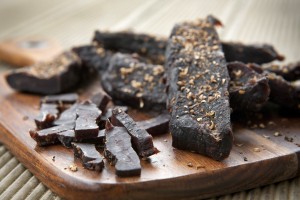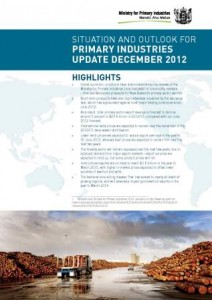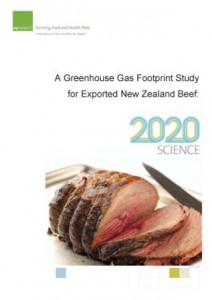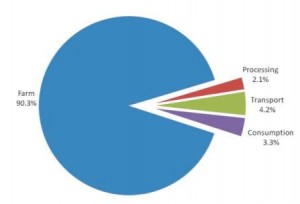 Pet food and prepared/processed beef products like beef jerky, or biltong, are two emerging growth opportunities for the New Zealand meat industry that have been identified in a newly released Coriolis report An Investor’s Guide to Emerging Growth Opportunities in New Zealand Food and Beverage Exports.
Pet food and prepared/processed beef products like beef jerky, or biltong, are two emerging growth opportunities for the New Zealand meat industry that have been identified in a newly released Coriolis report An Investor’s Guide to Emerging Growth Opportunities in New Zealand Food and Beverage Exports.
Strategic management consultants Coriolis carried out the report on behalf of the Ministry for Business, Innovation and Employment (MBIE) to identify emerging high potential food and beverage export categories.
The report filtered out various export categories over $100 million each, such as boneless frozen and chilled lamb, bone-in sheepmeat, boneless and bone-in frozen and chilled beef, meat and edible offal (including venison), fats of beef, sheep or goats, as they “represent New Zealand’s core food and beverage exports” and also categories under $2 million. This left a core 129 categories for analysis.
Pet food and jerky were two of the initial 25 categories short-listed for their emerging export growth potential. Two more meat industry related categories – protein concentrates and textured protein substances and sausages – just missed the initial cut, with frozen chicken cuts also being dropped out of the final 20 as it had low potential export growth.
Pet food has a large global market, strongly growing demand and opportunities for growth in Asia, especially China, Australia and other rich countries, the analysis shows alongside information showing the category is capital intensive, requires some skills and has moderate trade access. Pet food has already attracted investment from US-owned Watties and Mars NZ and Swiss-owned Nestle NZ. Currently, exports are worth US$169 million, out of a global market worth US$13.8 billion, but the “possible size of the prize” by 2025 could be in excess of US$500 million, says Coriolis.
Beef jerky has received inward investment from US company Jack Link’s, which has grown the category markedly in recent years. New Zealand’s exports of processed/preserved beef are currently worth US$83 million, out of a global market worth US$7.4 billion, but he potential prize lies between $100-200 million for the category to 2025, says Coriolis. Opportunities lie in Asia, but making jerky is a capital intensive process that requires skills.. The UK is seen to have potential for the product
Report: a “vital resource”
New Zealand Food and Grocery Council chief executive Katherine Rich says the report is a vital resource for anyone in the food industry or someone looking to invest in it. This is the first time this information has been collected in such as easy-to-reference format.
“The food industry is the backbone of the economy and is always looking for investment to grow export opportunities. It is important that this additional investment is attracted so new Zealand can take advantage of the significant growth opportunities presenting themselves, particularly in Asia as the middle class there grows,” she says.
“It is perhaps not surprising that the sectors identified by the report as showing the greatest potential to grab these opportunities are ones where New Zealand could have a competitive advantage: salmon, honey, spirits, biscuits, pet food, cherries and infant formula,” says Rich, adding that there are other areas too, including beef jerky.
“As the report identifies, our exports of these top categories in 2010 were greater than the wine industry ($1.03 billion as against $951 million) and most of them are growing faster than all other food and beverage exports. Some 17 of them have already attracted foreign and/or private equity investment, indicating that the market itself has identified they present strong opportunities for growth.”
The categories of processed goods are already having an impact. “But what is most exciting is that Coriolis predicts that if they all acheived their potential we would be looking at exports worth between $4.3 billion and $6.1 billion – approximately $4.9 billion additional.”
To achieve the Government’s goal of increasing exports by 40 percent by 2025, each of these categories needs to continue to grow, says Rich. “This MBIE report will play a critical role in informing this plan.”
An Investor’s Guide to Emerging Growth Opportunities in New Zealand Food and Beverage Exports can be read online at the www.foodandbeverage.govt.nz website, where you can also download a pdf copy.
 A record number of New Zealand restaurants have been recognised for their top quality beef and lamb cuisine.
A record number of New Zealand restaurants have been recognised for their top quality beef and lamb cuisine.








